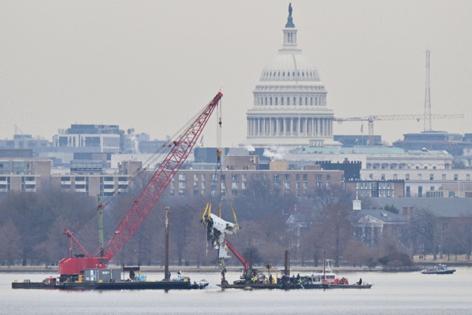Lawmakers mull a pricey air traffic control 'wish list'
Published in Political News
Lawmakers are talking about an estimated $30.5 billion “wish list” circulating on Capitol Hill to overhaul the nation’s aging air traffic control system as the ink still dries on the reconciliation law’s $12.5 billion down payment, sources familiar with discussions said.
That $30.5 billion figure is higher than Transportation Secretary Sean Duffy’s June estimate of at least $20 billion. The “wish list”— the phrase used by one source— estimate is likely unattainable unless the Federal Aviation Administration convinces lawmakers it can manage that much funding, the sources said.
The sources, including one former staffer with long experience of transportation on the Hill, added that appropriating more on top of the reconciliation law’s $12.5 billion to reach even $20 billion could be challenging unless Congress passes another reconciliation or supplemental bill.
President Donald Trump and Duffy have promised sweeping air traffic control overhauls since the January mid-air collision between an American Airlines flight and Army Blackhawk helicopter at Ronald Reagan Washington National Airport, claiming 67 lives, as well as other aviation mishaps and outages of air traffic control systems.
The National Transportation Safety Board is still investigating, but the crash raised questions about whether the airport’s outdated air traffic control systems — common among airports across the country — had a role.
The Government Accountability Office reported in September 2024 that the FAA had found that 105 of its 138 systems were unsustainable or potentially unsustainable.
Trump and Duffy called on Congress last week at a Cabinet meeting to provide more funding for the air traffic control project. Duffy said that he intends to find one company to manage the overhaul, as the FAA is “not qualified to manage this kind of a project.”
“What the money is going to allow us to do is move from . . . copper to fiber (lines) all over the country. We think we can do that in a year and a half to two years,” Duffy said. “We have a radar that dates back to the 1950s, some of it from the 60s and 70s. We get brand new radar across the country as well.”
Duffy in May released a framework for the overhauls that includes initiatives to transition to updated telecommunications networks, upgrade radio equipment, replace radar systems and address the air traffic control facilities backlog. The report also calls on Congress to provide an “immediate infusion of funding” for the plan.
‘NextGen PTSD’
Despite Duffy’s mention of private contracts to carry out the project, the sources said lawmakers are apprehensive about appropriating upward of $20 billion to the FAA after the agency’s decadeslong struggle to implement its NextGen overhaul — a multibillion-dollar undertaking to transform the nation’s air traffic control system to one based on satellite navigation and digital communications.
The FAA released its initial plan for NextGen in 2004. The agency said in 2023 that it expected to complete it by this year. But the final project won’t be done until at least 2030, the agency now says.
A Transportation Department Office of Inspector General report in April 2024 said industry representatives working on NextGen told investigators that the agency’s transparency and collaboration with them have been declining since 2018.
Sources familiar with House GOP discussions on air traffic control funding said the NextGen woes have fostered concerns over providing the FAA with the full amount up front. One source likened it to “NextGen PTSD.”
But aviation industry experts say the year-to-year appropriations process has hamstrung the FAA’s ability to adequately carry out air traffic control upgrades, as funding streams are unpredictable and unstable.
House appropriators are scheduled Monday to mark up the fiscal 2026 Transportation Department spending bill, which will include funding for the FAA’s facilities and equipment. The administration’s budget requested boosting that account to $4 billion for the year — a 26 percent increase from fiscal 2025.
Nick Daniels, president of the National Air Traffic Controllers Association, an air traffic controller union, said in congressional testimony earlier this year that $4 billion for the account is the minimum, but the FAA really needs $6 billion.
“Even when the Agency is not facing the threat of a shutdown, multiple administrations from both parties have submitted insufficient FAA budget requests to Congress,” Daniels said in written testimony. “Failing to maintain and replace critical safety equipment that has exceeded its expected life introduces unnecessary risk into the system.”
But Trump and Duffy’s interest in more funding likely can’t be achieved without another reconciliation or supplemental bill, sources familiar with discussions said — a tough sell for a Republican party already looking to trim the federal budget.
“I guess the potential still exists for another reconciliation vote,” Senate Commerce Aviation Subcommittee Chair Jerry Moran, R-Kan., said last week. “But we’re also working to make sure that... our appropriations, although our topline numbers are difficult, prioritize that project.”
_____
©2025 CQ-Roll Call, Inc., All Rights Reserved. Visit cqrollcall.com. Distributed by Tribune Content Agency, LLC.

























































Comments